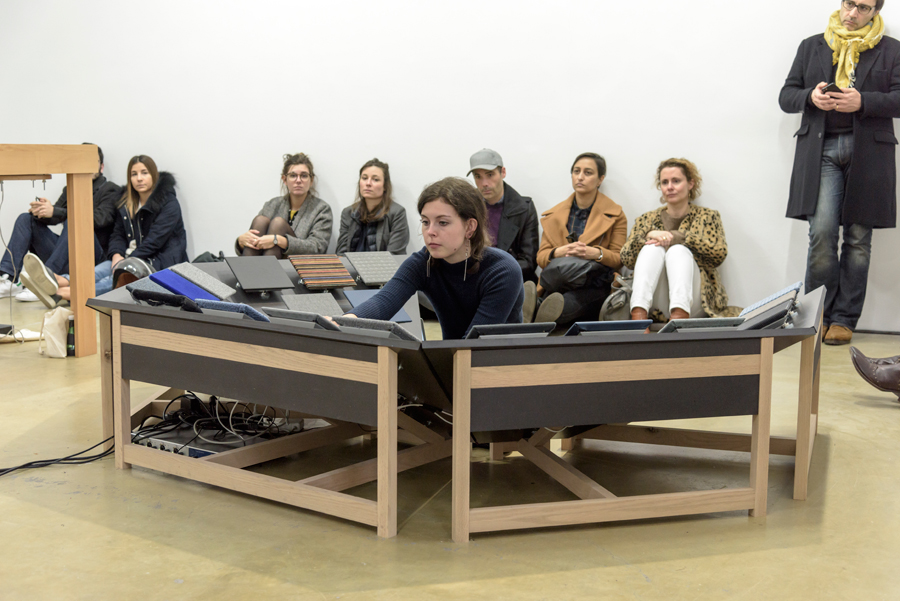Tarek Atoui
Galerie Chantal Crousel, Paris, France
Galerie Chantal Crousel, Paris, France

The gallery fills with a gusting wave of bass. I can, of course, hear it – it’s like an engine revving from the bottom of a well – but more striking is the way it feels, thrumming through my chest, neither inside nor outside but, somehow, both at once. The musician is playing something called a Sub Ink, a sub-woofer hooked up to a drawing mounted on a music stand: sounds are produced by fingers tracing the graphite marks. It is just one of a collection of unusual musical devices filling the main space at Galerie Chantal Crousel: there are also wooden tables mounted with large metal springs and screws, a laptop operated by a series of finger pads laid out like a hand, and a floor-based cockpit of differently textured textile samples, each of which is connected to a range of noises.

This strange orchestra is part of ‘WITHIN’, an ongoing collaboration between artist Tarek Atoui and a growing number of individuals, groups and organizations. Atoui launched the project in 2012 to explore the ways that deafness can make us think differently about the experience of both sound and performance. So far, there have been iterations at Sharjah Biennale in 2013, the Berkeley Art Museum in 2015 and several institutions in Europe – most recently the Bergen Assembly in Norway last year. As part of the project’s development, Atoui has worked with the curatorial duo Council (Sandra Terdjman and Gregory Castera) as well as sound engineers, composers and groups of people who are deaf or hard-of-hearing. Atoui’s aim is for these instruments to end up in a music school or educational institution. In the meantime, they are in regular use at Chantal Crousel.

The exhibition, which also includes five videos of the project’s previous iterations, involves a busy programme of events. Aside from the Sub Ink, the highlight of the opening performance was the playing of the Ouroboros. Taking its name from the ancient symbol of a serpent eating its own tail, the instrument is made up of two lengths of transparent tubing held horizontally in the air. The player – one of several professional musicians performing alongside Atoui – places speakers to their throat and lips before one of the tubes. By opening and closing their mouth, the player controls the Ouroboros’s sounds: the effect is soft but insistent, like a spectral calling from through the trees.

On my second visit to the gallery, the Ouroboros had a very different effect. I arrived as Atoui was giving a lesson to a group of deaf children. One girl struggled to control the
instrument: her mouth opened and nothing came out but her determination was striking. So, too, was the way the children communicated: through touch, gesture and a constant attentiveness to the actions and intentions of one another. Sign language requires such focus. It also requires clear sightlines, as Atoui explained, citing pioneering deaf architect Jeffrey Mansfield, in an excellent interview in the exhibition booklet.
Watching the children, it became clear that Atoui’s strange instruments are less geared towards a performance for an audience than towards facilitating a process of discovery. This involves a different conception of play and of sound: not only heard from afar but felt as a texture at the fingertips or a humming through the chest. As an onlooker, it’s hard not to feel left out, but this only reinforces Atoui’s premise: that there are limits to both sight and sound, limits at which each sense blurs, often unnoticed, into something else entirely.
























